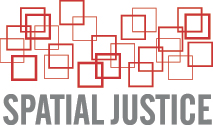HOUSING ISSUES
SEGREGATION
Housing provides not only shelter but also access to a particular neighborhood. Spatial inequality by neighborhood is therefore one dimension of housing relevant to spatial justice. A concern with neighborhood differences and segregation lends itself to the analysis of distribution across territories. In one example, Joassart-Macelli and others (2007) compare different areas within the Los Angeles area and measure the degree to which the poor are spatially segregated.
URBAN GROWTH AND SPRAWL
Within urban areas, there is a long tradition of analysis of spatial inequality in relation to the pattern of urban growth. One example of an analysis of position is the consideration of sprawl by Dietzel and others (2005). The spatial pattern of Houston is traced over time to reveal periods when growth is more compact or dispersed.
Another paper on sprawl by Tsai (2005) considers spatial auto-correlation as means to compare the degree of sprawl across different metropolitan areas. Auto-correllation, or the clustering of similar data values at similar locations is also relevant to urban property values, as described in paper by Han (2005).
URBAN DECAY AND GENTRIFICATION
In recent decades, there has been a great deal of attention on the inter-related dynamics of urban decay and gentrification. The switching between urban decay and gentrification has been documented via the spatial pattern of properties with delinquent tax paymets, as in the work of Neil Smith. Analyzing the displacement of the poor is one potential focus of spatial justice research on gentrification.
EXPOSURE TO NEIGHBORHOOD CRIME
The unequal distribution of crime throughout urban areas has been another focus of spatial analysis. Murray and others (2001) analyze the pattern of crime in an Australian city and demonstrate the usefulness of exploratory data analysis (ESDA) techniques.
Papers on crime have also gone on to consider the spatially varying relationships between crime and its causes. Malczewski and Poetz (2005) use geographically weighted regression (GWR) to show how the causes of crime vary from neighborhood to neighborhood. Spatially varying relationships are also relevant to the association between commuting times and social factors, as described by Lloyd and Shuttleworth (2005).
